Opinion: EV Range Does Matter
Last month, I was chatting with Dave Thomas from CDK Global on the TTAC podcast. We were discussing electric vehicles, and Dave suggested that for many EV buyers, range isn’t that much of an issue.
2024 New York Auto Show Recap -- A West Side Bounce Back?
One of my favorite little nuggets of irony is that the Hell's Kitchen area of Manhattan is actually very well-to-do. It's not anything like any commonly imagined vision of hell, unless your vision of hell consists of yuppies, puppies, and way too many people.
We Need to (Finally) Discuss That Road & Track Article
A few weeks ago, venerable car-enthusiast magazine/Web site Road & Track created a mini-controversy with the deletion of an article from the Internet.
Opinion: Politicians Are Lying About Biden's EPA Rule
The Biden Administration dropped a new rule limiting tailpipe emissions from passenger vehicles yesterday, and you know what that means.
Yes, it's lying season!
In Memoriam: Marcello Gandini, an Automotive Design Master
The world lost one of its preeminent car designers today, as Marcello Gandini has passed away at the age of 85. Though perhaps best known for the flashy and outrageous Lamborghini Countach, Gandini’s pen was applied to many other Italian, German, French, British, Japanese, and Swedish concepts and production designs. Gandini’s prolific portfolio of work made a permanent mark on automotive design.
The Grand Tour's "Sand Job," Nothing to See Here, I'm Afraid
Just short of the eight-month mark, Amazon’s expensive The Grand Tour is back for its penultimate episode. Following last summer’s “ Eurocrash,” the maturely titled “Sand Job” sends the trio of presenters to an all-new location to tread upon content ground they’ve crossed many times previously. And though the special is sparse on content, it’s certainly coming with length.
Pencil-Necked Finance Dweebs Suggest Anyone Making Six-Figures Should Only Buy a $15,000 Car
Look, we’re all for a pinch or two of financial prudence around here. Springing for luxury items just isn’t in the cards for most of us, despite the lavish recompense* deigned upon us by our corporate overlords in Downtown Canada. (*note: the recompense isn’t actually lavish at all).
But even we feel comfortable calling out moronic fiscal advice when we see it. Case in point – a post on a website called Investopedia suggests that anyone making $100,000 per year should spend no more than roughly $15,000 on a car.
Opinion: Stop Subsidizing Electric Vehicle Programs
Hoping to increase the United States’ electric vehicle charging infrastructure, the White House has announced $623 million in grants to build more charging stations. This plays into the Biden administration's goal of having 500,000 public chargers in the U.S., and see 50 percent of all new vehicle sales become electric, by 2030. However, the federal government has already poured billions into the cause and it’s looking like an incredible waste of money during a period where citizens are growing increasingly concerned about the economy.
Opinion: Making Sense of the Stellantis Auto Show Decision
News broke earlier this week that Stellantis would pull out of auto shows, including the upcoming Chicago Auto Show, for the foreseeable future.
Opinion: Tesla Needs to Behave Better
Lost a bit in the holiday rush here at TTAC was a new Reuters story about Tesla blaming the buyers of its cars for parts failures.
Opinion: Stop Driving With Your Dogs in Your Lap
If you see something, say something. That's what they say.
Well, I've seen something problematic lately, and now I feel like it's time to use this platform to put a PSA out into the world.
Opinion: GM Shouldn’t Kill Apple CarPlay, Android Auto
General Motors announced its intention to drop Apple CarPlay and Android Auto on its upcoming EVs earlier this year. Now we have a new piece out in Motor Trend in which the company explains in so many words that the decision is all about driver safety.
Opinion: The Tesla Cybertruck Won't Change the Game
Now that I've had nearly a week to digest the Tesla Cybertruck news, I've come to the conclusion that the Cybertruck will neither revolutionize the automotive market nor be such a flop that it kills Tesla.
Opinion: The Bentley Crash in New York is Scrambling Brains
Last week, on the day before Thanksgiving, a middle-aged couple in a Bentley met a fiery end under mysterious circumstances near the U.S.-Canada border outside of Buffalo, New York.
2023 Los Angeles Auto Show Recap -- Stepping in the Right Direction
It was gloomy when I landed in Los Angeles last week. Gloomy enough that it put me in a sour mood -- despite living in the Midwest, I like sun.
The same cloud cover that prevented me from getting a view of the city upon approach to LAX painted downtown in a shade of grey that would be right at home in some depressing movie about urban malaise.
Then, on Thursday, the sun came out. Just in time for this year's sole media day.
Editorial: Why Are People Worried About Automotive 'Kill Switch' Mandates?
This year has seen a surge of panicked reports discussing how the U.S. government has mandated vehicle hardware that would allow authorities to wrestle control away from the driver. Usually referenced as a “kill switch,” the device is supposed to be required on every new automobile manufactured after 2025.
The claim hangs responsibility on the extremely broad Infrastructure Investment and Jobs Act that was passed in November of 2021. But the pertinent legislation actually focuses on combating impaired motorists by mandating “advanced drunk and impaired driving prevention technology” as standard equipment. Though it doesn’t get all that specific in terms of what that entails and gives an incredible amount of leeway to federal regulators.
Who Actually ‘Won’ the UAW Strike? Are Union Pay Bumps Sustainable?
Despite rampant talk about how the United Auto Workers’ stand-up strike and its resulting deals would bankrupt the automotive sector, the union strategy appears to have ended up costing the industry less than the labor strike GM endured all by its lonesome in 2019.
Opinion: Blaming Rising Fuel Prices on High Temps is Dumb
With average fuel prices creeping back up, you’ve undoubtedly seen a slew of articles trying to explain why. The trend seems to be to just blame it on warm weather.
Over the past week, countless media outlets published stories about how oil refineries have had to scale back production targets to contend with exceedingly high temperatures. But is this really the keystone issue for why you’re once again contending with undesirable fuel prices?
Opinion: NASCAR Needs to Continue to Mix It Up
DuSable Lake Shore Drive is back open. The flooding has, hopefully, receded. The drivers are no doubt thinking about Atlanta.
Yet the Grant Park 220 that took place here in Chicago last weekend is still very much on my mind.
The Grand Tour's "Eurocrash," 45 Percent of a Car Show
On June 16th Amazon Prime released the latest episode of The Grand Tour, “Eurocrash.” With a runtime longer than every previous episode of the show (1 hour 47 minutes), “Eurocrash” sends the presenters to central Europe for a long road trip. This particular installment is a bit different than past voyages though: The connecting thread between the presenters, journey, cars, and the episode’s events goes missing.
Opinion: Subbrands Are A Marketing Failure
Automakers seem to love the idea of subbrands.
The most recent one to make this sort of shift -- Land Rover.
What I can't figure out is: Why?
Opinion: More Automakers Will Dump Apple CarPlay, Android Auto
If you’re someone who follows automotive trends, you’ve undoubtedly noticed just how much effort is going into infotainment screens and features associated with connectivity. This is because auto manufacturers believe leveraging consumer data in a manner similar to tech companies (e.g. Microsoft, Meta, Amazon, Apple, Alphabet) will yield oodles of cash. However, this is also why we’ve started seeing businesses dumping things like Apple CarPlay from their vehicles and some of us have a sneaking suspicion this practice will continue.
2023 New York Auto Show Recap: Are We Back?
For better or worse, a lot of people in this business on all sides (journalist, analyst, PR, pundit) tend to use any given auto show's press conference schedule, along with the type of debuts that occur/news that is made, as a metric for the health of the industry.
Opinion: People Are Waking up to the Perils of Modern Automotive Features
One of the most infuriating things about this job is watching the media scratch its head about why roadway fatalities keep going up when the answer is as plain as the touchscreens on their dashboards. Modern vehicle interfaces are much more cumbersome than their predecessors and yet we’ve seen years' worth of coverage offering all the insight or a shrug. While there are certainly other reasons crashes have spiked (e.g. drug and alcohol abuse), the alluring tablet located next to your steering wheel has been the elephant in the room nobody was talking about — not with the seriousness that is deserved.
But things could be changing.
Opinion: Let's Come to A Détente About Screens in Cars
Motor 1's John Neff recently wrote a screed defending the proliferation of screens in cars, and as he anticipated in his concluding paragraph, his take went over about as well as a stinky release of flatulence during high tea with the royal family.
Automotive enthusiasts and journalists, as well as consumers, pushed back hard, at least from what I saw on the socials.
Where Your Author Makes a Quick Purchase (and a Medium Length Trip)
Picture it. Last Tuesday, late afternoon. Checking the used convertible listings like I’d been doing for some time, it seemed the right car would never materialize. But on that particular afternoon, I happened to check Facebook Marketplace, a terrible place to search listings which I generally avoided. The default 249-mile search radius showed me a particular convertible I hadn’t seen listed before. Turned out it was the one.
Editorial: This Isn’t The Time For Biden’s ‘Buy American’
Two weeks ago, President Joe Biden announced during the State of the Union that federal infrastructure projects will, going forward, be required to use all American-made construction materials. Applause resounded throughout the divided chamber.
And why not? Nobody ever wins an election - especially when it’s not an election year - by promising to buy more foreign-made goods.
2023 Chicago Auto Show Recap/Gallery: Step in the Right Direction
The Chicago Auto Show has often been a dreary event from a new-vehicle launch perspective. A fun event for consumers, sure, but often overshadowed in terms of vehicle debuts by the shows in Detroit, New York, and Los Angeles.
Opinion: The Hertz EV Gambit Isn’t Paying Off
Hertz has reportedly fallen short of its promise to buy 100,000 electric vehicles from Tesla last year. Though, taking a look at the role EVs are playing in the rental industry right now, the company might actually have made the correct decision.
Where Your Author Still Hasn't Purchased a Used Convertible
Would you believe it’s been a year and a half since we last discussed used convertibles? Much has changed during the interim: The economy, the used-car market, and life in general. While some of you were fairly convinced I’d purchase a car “on the rebound” after I’d dumped the quality control nightmare that was the Golf SportWagen in July of 2021, you were wrong. Let’s catch up a bit.
Opinion: Political Stunts Remain as Tiresome as Ever
Earlier this week, we covered legislation introduced in Wyoming that would ban the sale of EVs in that state.
Opinion: Amazon Would Be Stupid to Cancel Jeremy Clarkson Over the Markle Scandal
Amazon is reportedly dumping famed auto writer Jeremy Clarkson over his having made jokes about Meghan Markle late last year. Though it’s only a rumor at present and seems like the streaming service may just be attempting to appease the offended parties until all is forgotten. Unspecified sources have told Variety that Amazon won’t be working with the host beyond the seasons of The Grand Tour and Clarkson’s Farm that have already been commissioned – providing a buffer period for tempers to cool and memories to fade.
TTAC's Best and Worst Cars of 2022
It's that time of year. Time to look back, take stock of the year that's just passed, do some self-reflection, and think about the best and worst cars we drove in 2022.
Opinion: NYT Pundits Finally See Tesla As It Is
As I wrote a week or two ago, the outside world is finally catching on to what automotive journalists, industry analysts, and car enthusiasts have long known about Tesla. This week, two columns in The New York Times showed that well-known pundits like Farhad Manjoo and Paul Krugman are catching on/catching up.
Opinion: The Rest of the World is Finding Out What The Auto World Already Knew About Elon Musk
Ever since Tesla boss Elon Musk took over Twitter, he's found himself mired in controversy, often of his own making.
Opinion: Cadillac is Making a Mistake With the Ultra Luxurious 2024 CELESTIQ, a $300,000-plus Liftback
As we just reported, Cadillac has just released some more information about their upcoming flagship, the elegantly named and always capitalized CELESTIQ. Set to arrive for the 2024 model year, Cadillac promises its new halo five-door will be unlike any EV ever built previously, and single-handedly restore Cadillac to its former “Standard of the World” status. I really don’t think so.
The Grand Tour's "A Scandi Flick" Crashes, Bangs, and Contrives to Fill Its Length
It’s been nearly three years since The Grand Tour switched its format away from the elaborate traveling tent and to its all-special format. On Friday, Amazon released the fifth such special, and the first “post pandemic” episode (their term, not mine). In “A Scandi Flick,” the familiar trio heads across Scandinavia in three rally-inspired all-wheel drive sedans. It’s certainly not the show’s worst work, but it’s far from the best. You’ll need to suspend disbelief and leave your thinking skills in another room.
Opinion: We Need More Off-Road Parks (and Drag Strips, and Tracks…)
This past weekend, I went off-roading. I took a Ford Bronco Raptor I was testing to the Badlands Off-Road Park in Indiana (with Ford’s approval) because I felt that the Raptor needed to be taken off-road, if possible, for me to get a full picture of the vehicle’s capabilities ahead of a possible future review.
Rare Rides Icons: The History of Stutz, Stop and Go Fast (Part XVIII)
We return to our historical Stutz coverage once more today and continue reveling in the four-door sides the neoclassical entity offered alongside the Blackhawk, its sole entree. In our past two installments, we covered the first two sedans offered by Stutz, the Duplex and the IV-Porte.
While the Duplex was a one-off and based on either a Cadillac Fleetwood or a Pontiac Grand Prix (it’s unclear), the IV-Porte traced its lineage very clearly to the B-body Pontiac Bonneville. Offered from 1979 to 1981, the IV-Porte found around 50 customers for its GM-adjacent and gold-plated styling. At the time of the Bonneville’s demise, Stutz was happy with the decent sales clip of the IV-Porte and was not about to go without a sedan offering. Enter Victoria.
Rare Rides Personas: Powel Crosley Junior, Tiny Cars, Radio, and Baseball (Part I)
Welcome to a new series in the Rare Rides universe, where we’ll spend some digital ink considering the humans behind the automobile experience. This series will focus on the life and times of the industrialists, inventors, engineers, tycoons, and the like who decided to devote a portion of their life to the automobile, whether intentional, accidental, or against their will. Ideally, we’ll proceed with personas first, and then cover their automobiles in a Rare Rides or Icons series.
Our first Rare Rides Personas subject is Powel Crosley Jr., a well-known native of your author’s present city, Cincinnati, Ohio. Commenter Jeff S suggested some Crosley coverage back in May, and here we are a couple of months later with the launch of an all-new series. Onward, to Crosley!
Abandoned History: The Life and Times of Edsel, a Ford Alternative by Ford (Part III)
Ford conducted a lot of marketing research for its Edsel brand and was assured by many well-educated MBA types that its new lineup would be hugely successful. The research scientists said the unique styling and features Edsel offered would appeal to a broad cross-section of the American populace. After a television musical debut in the fall of 1957, Edsels were shipped to dealers where they remained under wraps until it was time for the ‘58 model year.
Crazy styling aside, Edsel’s arrival caused some immediate brand confusion in relation to Mercury, and in more limited circumstances, Ford. Much of said confusion occurred in the company’s debut year when Edsel spread the “lots of new models” sauce a little too thin. We start at the brand’s second most basic offering: Pacer.
Rare Rides Icons: The History of Kia's Larger and Full-size Sedans (Part X)
As we return to the history of Kia’s large sedans, we find ourselves in the midst of the 2010s. When the full-size and rear-drive K900 was introduced for the 2015 model year, Kia’s front-drive comfort option, the K7 (Cadenza to you), was in the midst of its first generation. A replacement for the unloved and ugly Opirus (Amanti to North Americans), the K7 ushered in sophisticated but bland Euro-centric styling from Peter Schreyer upon its launch in 2010.
Cadenza didn’t make its way to the North American market until 2014, and debuted with slightly sharper styling and a nicer interior via a mid-cycle refresh. Kia took its time in bringing the Cadenza to the North American market, as they wanted to be sure they got it just right.
In the end, the first Cadenza fell between the soft rock of the Lexus ES and the hard place of the Nissan Maxima. Additionally, it lacked the prestige to compete with other large front-drive upmarket offerings of the time. The new cadenza lasted only three model years in North America, as Kia was ready for an all-new generation K7/Cadenza in 2017.
Rare Rides Icons: Lamborghini's Front-Engine Grand Touring Coupes (Part VI)
We pick up our Lamborghini front-engine grand touring coverage at a time of design disappointments. Though the exotic Miura gave the company instant notoriety as it simultaneously created the super car class, the company’s other model was due for replacement. A more traditional looking two-door, the 400GT 2+2 was an edit of the 400GT Interim (2+1), which was itself an engine upgrade on the 350GT, the company’s first production car.
Ferruccio Lamborghini anticipated the need for a new design, and went in search of a 400GT replacement around the time it entered production in 1966. Lamborghini turned first to Carrozzeria Touring. But even though they penned the 350GT and 400GT designs, their two-seat shooting brake suggestion, Flying Star II, was not to Lamborghini’s taste.
In fact it was sort of like Touring didn’t read the prompt. An abandoned race car design called the 400GT Monza from Neri & Bonacini was also presented as an option. The firm built Lamborghini’s tube frames a few years before, but that didn’t lend them enough goodwill at Lamborghini to get their design accepted. Time for take three!
Rare Rides Icons: The Lincoln Mark Series Cars, Feeling Continental (Part X)
We resume our tale of the Mark series cars today, during a period of recovery for Lincoln and their Continental lineup. The introduction of all-new unibody Lincolns in 1958 saw questionable over-the-top styling debut right at the start of a sharp recession. Most people didn't enjoy the looks of the new Mark III. Lincoln toned down the glitz for the '59 models, with better-integrated styling cues here, and less bulbous sheet metal there.
A new naming scheme arrived in 1959, Mark IV Continental, as Continental became a version of Mark. At the same time, Ford attempted to take the Continental upscale via the introduction of the more spacious (but not longer outside) Mark IV Continental Town Car and Limousine.
With a better US economy, Lincoln improved its sales figures considerably in 1959. However, the portion of those sales that were Continental models dropped by almost 12 percent. However, given all the millions Ford poured into its new Lincoln models it was not prepared to ditch them after just two years. There was a third year of the unibody Mark, with the highest series number yet: V.
Abandoned History: Ford's Cruise-O-Matic and the C Family of Automatic Transmissions (Part VI)
Fuel Prices Are Allegedly Cooling Off
With the last several months delivering record-breaking fuel prices, as society endures what has undoubtedly been the largest spike in energy cost and inflation since the 1970s, everyone has been hoping to catch a break this summer. Some have even gotten theirs. While things are still looking exceptionally bleak in the long term, the United States appears to be enjoying a modest reprieve.
Documentary Series The Last Independent Automaker in Production, Will Chronicle the Life and Times of American Motors Corporation
A new documentary is currently in production and promises to be of interest to many of our readership. It’s about everyone’s favorite underdog automaker, American Motors Corporation (1954-1988)! Pride of Kenosha, Wisconsin. The team behind the production of The Last Independent Automaker is assembling a deep dive into the brand’s history, which started in 1954 when car and refrigerator manufacturer Nash-Kelvinator Corporation acquired Hudson Motor Car Company, and formed AMC.
Rare Rides Icons: The History of Stutz, Stop and Go Fast (Part XVII)
We’re back again with more Stutz history, and our coverage of the bric-a-brac produced by the Stutz Neoclassical company as complementary offerings to two-doors like the Blackhawk, Bearcat, and Bearcat II. In our last entry, we covered the Duplex, a sedan that (unsuccessfully) wore Blackhawk styling. Based either on a Pontiac or a Cadillac, the Duplex was the ultimate production version of the Ministeriale prototype sedan built by Carrozzeria Padane.
With an astronomical ask of $32,500 ($251,312 adj.) circa 1970 and styling that hadn’t translated well into a sedan, the Duplex was a non-starter. Just one was ever made, and it was sold to a criminal in Utah. But that didn’t deter CEO James O’Donnell, who was insistent a Stutz sedan was viable. A few years later there was another Stutz sedan presented: IV-Porte.
Rare Rides Icons: The History of Kia's Larger and Full-size Sedans (Part IX)
It’s time once again for more Kia large sedan goodness. Like last time, we pick up in the early 2010s. Kia’s second full-size sedan developed under Hyundai’s controllership was the K7, or Cadenza in all markets outside South Korea. Pitched as a value-priced premium front-drive car, it competed against the likes of the Toyota Avalon and Nissan Maxima, but lacked any defined comfort or sporty characteristics. Cadenza also had a bland corporate design courtesy of the company’s new Euro-like styling mission, and former VW designer Peter Schreyer.
Shortly after the Cadenza went on sale, Kia turned its sights toward an even larger sedan: A new rear-drive one to occupy the luxury space, a class above the Cadenza. It was the largest car Kia offered in nearly two decades, the first rear-drive Kia since the (Mazda Sentia) Kia Enterprise of 2002, and the first rear-drive sedan Kia ever sold in the North American market. It’s time for K9.
Abandoned History: The Life and Times of Edsel, a Ford Alternative by Ford (Part II)
Ford successfully orchestrated a splashy live television musical debut for its new brand Edsel in the fall of 1957. The program was a culmination of a multi-year project to establish a new division of Ford that would compete more directly with the likes of Oldsmobile, Buick, and DeSoto. Edsels promised to be notably different from the Mercury with which it shared most everything except styling.
Edsel was to be much more value-conscious than the new-for-’58 unibody Lincolns, which sought to move the brand upmarket after the almost instantaneous discontinuation of the Continental Division. After Frank Sinatra and Bing Crosby ushered in the Edsel name it was time to show off the all-new models in showrooms, and introduce a supposedly excited American consumer to the lineup.
Rare Rides Icons: Lamborghini's Front-Engine Grand Touring Coupes (Part V)
Lamborghini proved it could make a luxurious grand touring coupe that a few people were willing to buy instead of a Ferrari with its first-ever production car, the 350GT. Based on the 350GTV prototype that was not actually drivable, the 350GT eventually grew and matured into the very similar 400GT we featured last time.
At its inception, the 400GT was just a 350GT with a larger engine, since the intended roof edits to turn the 2+1 into a 2+2 were not production ready. Lamborghini advertised the 350, 400, and 400 2+2 as three separate models, a fun take on the truth. But after three variations of the original 350 design, it was time for something new. The replacement process was not without drama.
Rare Rides Icons: The History of Stutz, Stop and Go Fast (Part XVI)
We return to our long-running Stutz historical coverage today, with a few of the odds and ends vehicles that were never the headliners of Stutz’s brand portfolio. During the Seventies and Eighties, the Blackhawk and targa roof Bearcat funded some other fun ideas that occupied the thoughts of company CEO James O’Donnell.
In our last entry, we covered what was perhaps the strangest offering of the latter Stutz entity, a C/K era Suburban that concealed a mounted machine gun in its interior. The armored SUV was subsequently turned into a gun-free dictatorial parade sedan with targa roof, and a trunk. The be-trunked Suburban also donated its shape to an upright regular sedan and six-door funeral transport.
And while the Stutz Suburban takes were intended for foreign heads of state for security and coup d’etat purposes, the Stutz sedans were directed at the company’s more traditional American customer: Someone who feared no peasant uprising but did enjoy flashy styling and lots of elegance. Introducing the Duplex.
Abandoned History: Ford's Cruise-O-Matic and the C Family of Automatic Transmissions (Part V)
We resume our Ford Cruise-O-Matic transmission coverage today, as the original two- and three-speed automatics of the Fifties transition into the new C family. C transmissions were designed to be lighter (aluminum) and more efficient than their cast iron predecessors. The wonder of alloys!
In our last entry, we covered the first two C transmissions, the C4 (1964-1981) and C6 (1966-1996). Since we’re proceeding chronologically, we step back to Cruise-O-Matic for a moment, and a mix-and-match transmission: FMX.
Rare Rides Icons: The Lincoln Mark Series Cars, Feeling Continental (Part IX)
Our Lincoln Mark Series coverage continues today, and we pick up at the end of 1958. After Ford dumped many millions into the Continental Division and quickly shut it down, the company then spent a lot more money to develop an all-new unibody platform for Lincoln’s usage. In an attempt to woo customers away from Cadillac, the new Lincolns for 1958 wore some of the most shocking styling ever to come from Detroit.
All three of Lincoln’s new “models” were really just trim levels of the same car. Said models included Capri, Premier, and the top-tier Continental Mark III, which was not a Continental except in trim badges. At least it had a Breezeway window! At the 1958 launch of Lincoln’s new unibody line there was a steep recession across the globe, as lots of Americans decided they didn’t actually need a new car every year or two. Nevertheless, the Continental Mark III made up 62 percent of Lincoln’s sales that year. Lincoln veered off on a revised course in 1959, hoping to improve its lot with some more “new” models.
Rare Rides Icons: The History of Kia's Larger and Full-size Sedans (Part VIII)
We return to Kia’s large sedan history today, at a point shortly after the launch of the K7. Kia’s full-size front-drive for the 2010s, the K7 was called Cadenza in all export markets, and was a successor to the unfortunately styled Opirus (Amanti in North America). Kia hired Peter Schreyer from his longtime employment at Volkswagen Group in order to usher in a new stylistic era at Kia.
Though it went on sale for the 2010 model year, Kia wasn’t quite ready to send the Cadenza to the North American market. With the market’s general rejection of the Amanti in mind, Kia called on Schreyer to refresh the Cadenza and lux it up before its North American launch.
Opinion: The Overstyling Of Hyundai/Kia Vehicles May Be Coming To A Head
I’ve seen the new Kia Sportage in person. I’ve also seen the new Hyundai Tucson up close. Both show the companies’ latest take in a series of outrageous designs that are meant to win over consumers.
Opinion: Maybe Crossovers Aren't So Bad, After All?
Maybe it’s just automotive Stockholm Syndrome, but after 15 years of testing vehicles, a huge percentage of which have been crossover SUVs, I’m ready to say it: Crossovers aren’t so bad.
Yeah, I know, you’re going to ask me to blink twice if I am OK, but hear me out.
Abandoned History: The Life and Times of Edsel, a Ford Alternative by Ford (Part I)
Edsel received an honorary mention a couple of weeks ago, in our current Rare Rides Icons series on the Lincoln Mark cars. Then it was mentioned again the other day in Abandoned History’s coverage of the Cruise-O-Matic transmissions. It’s a sign. We need to talk about Edsel.
Rare Rides Icons: The History of Stutz, Stop and Go Fast (Part XV)
Last time in our tale of Stutz the company finally realized its dream of a true convertible, the Bearcat II. The original product dream of CEO James O’Donnell, the Bearcat II went on sale in 1987. Though the company’s fate was pretty much sealed by that time, Stutz had its heyday of models circa the early Eighties. Spoilers: Machine guns were involved.



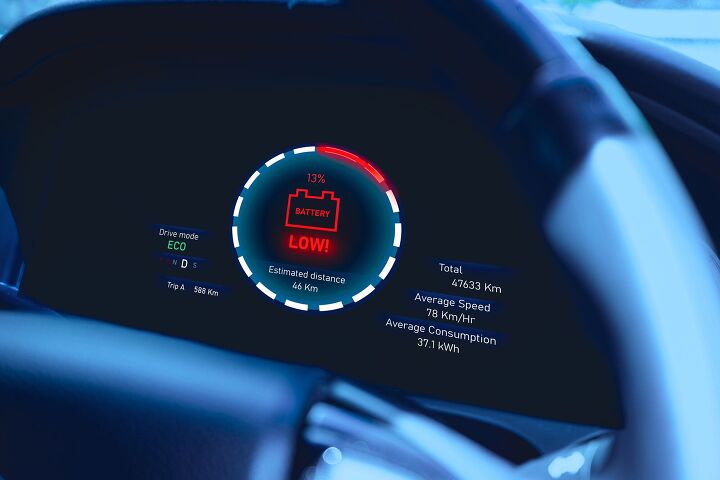
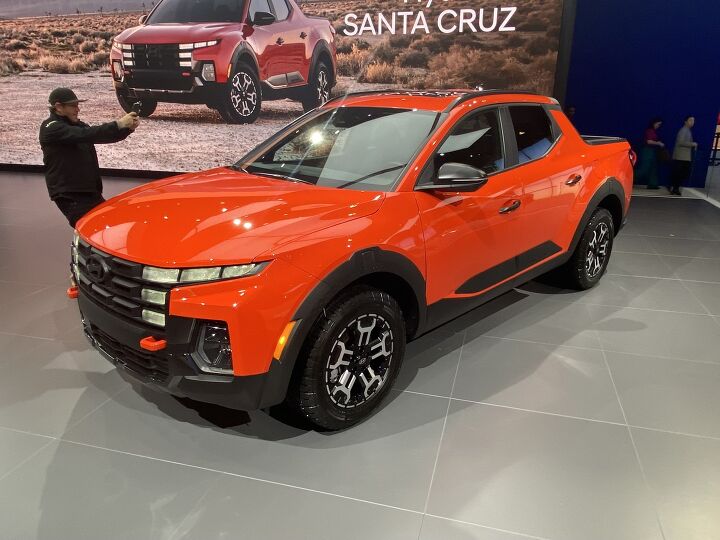


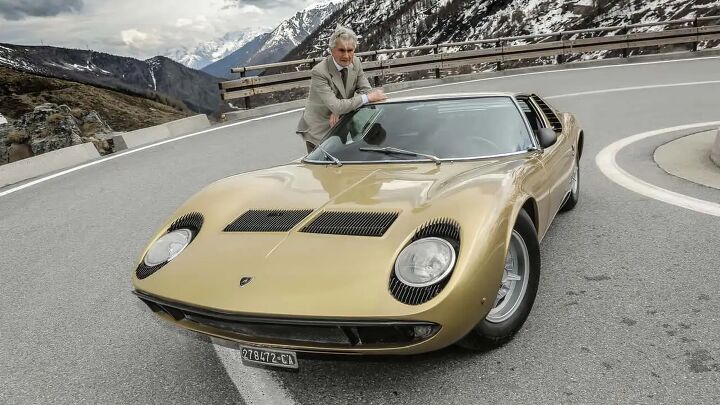



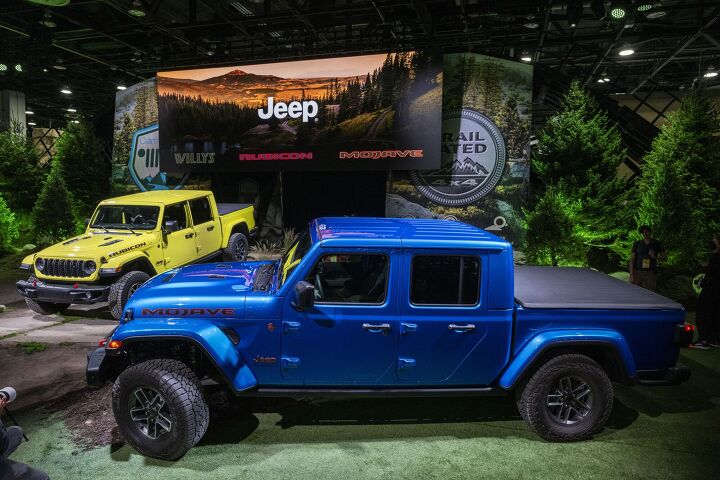
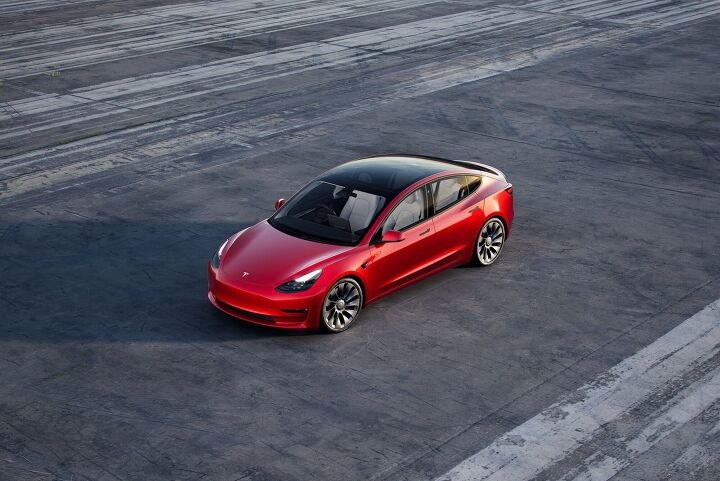

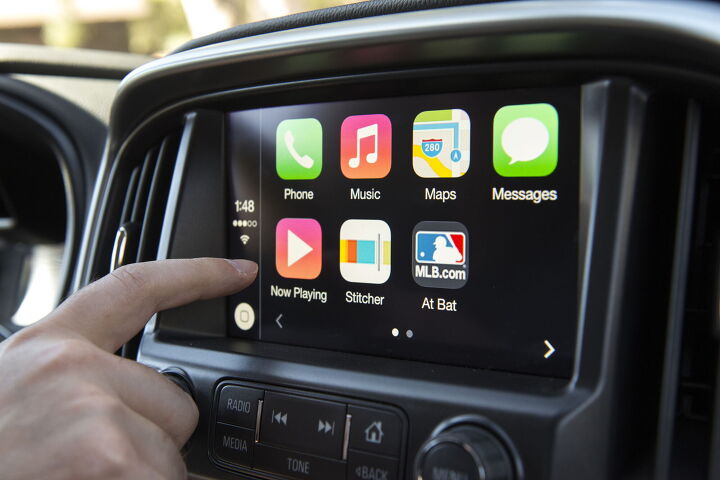

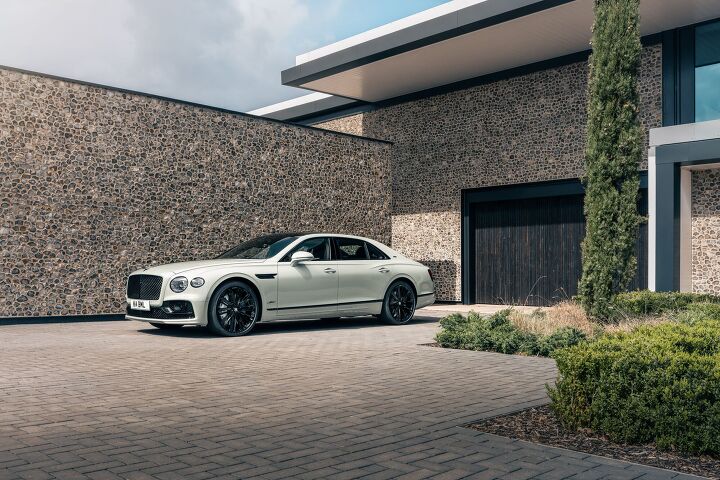









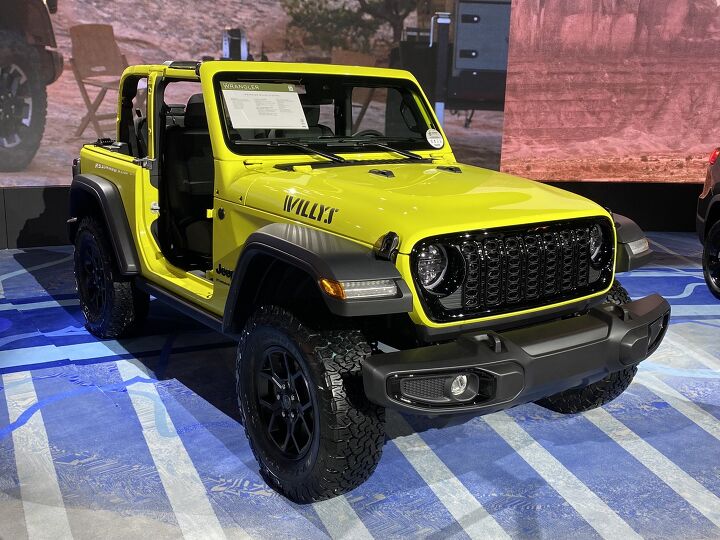
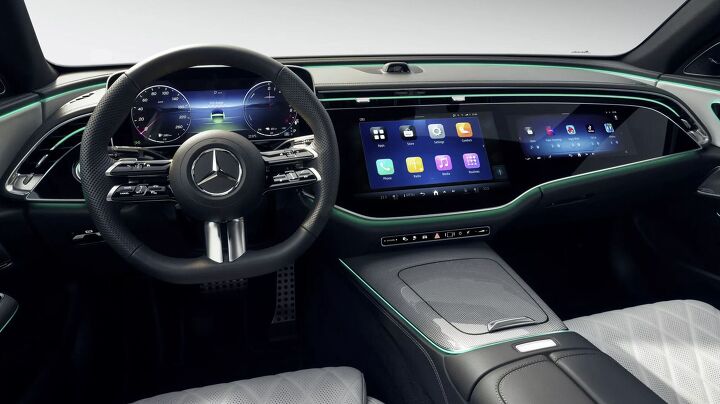
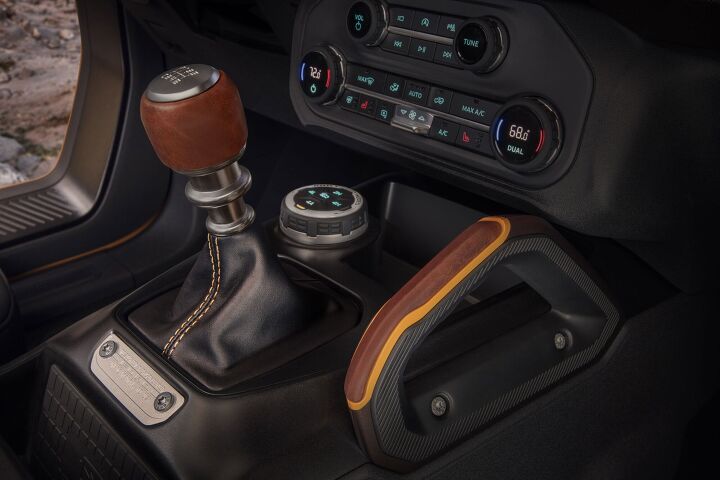




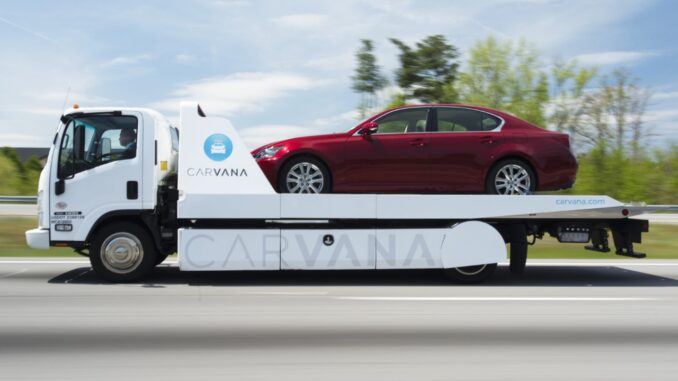


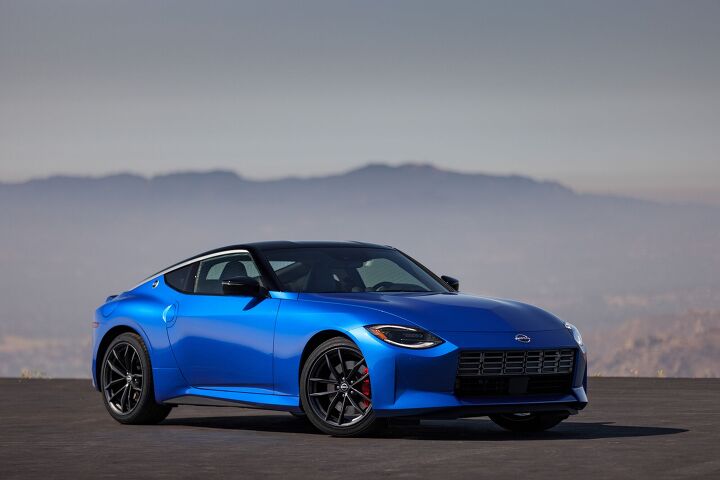
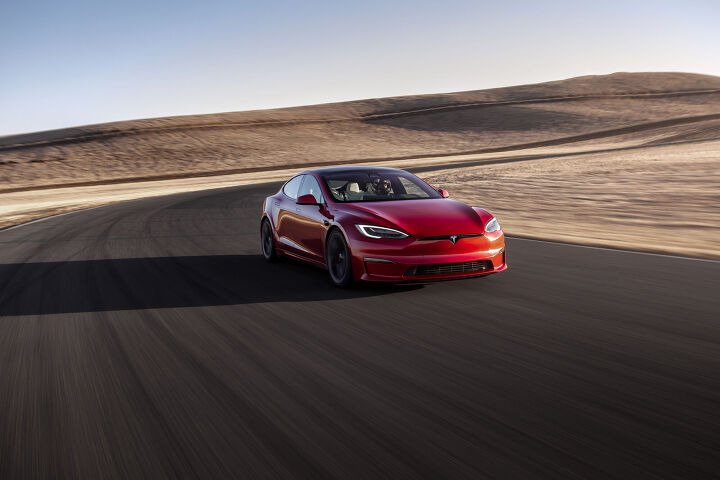




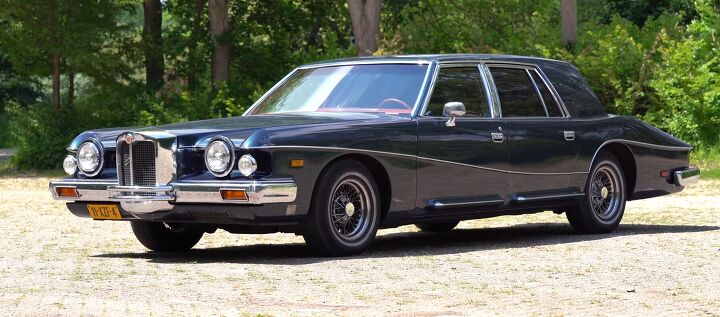
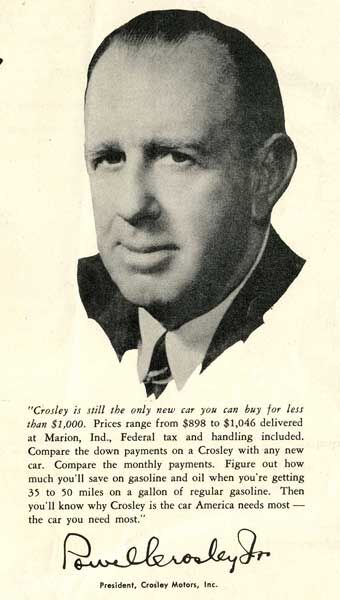
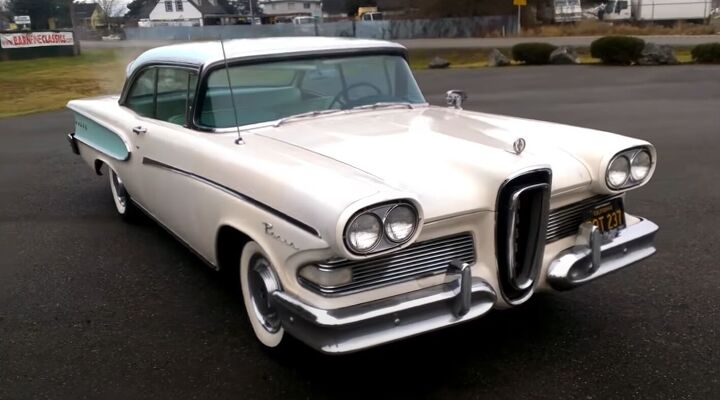
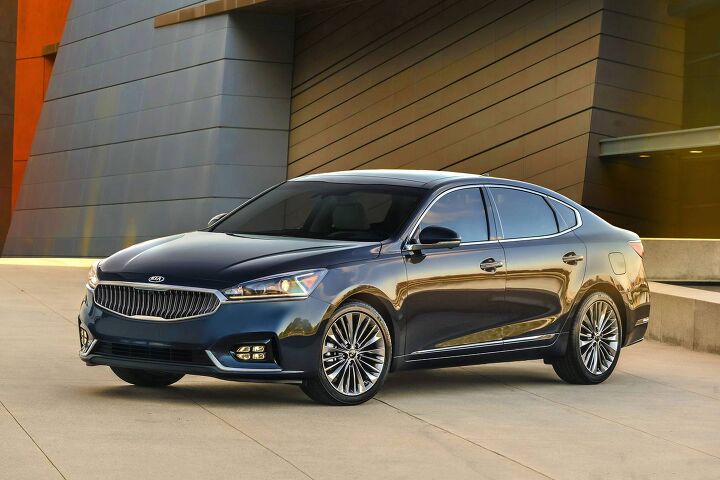
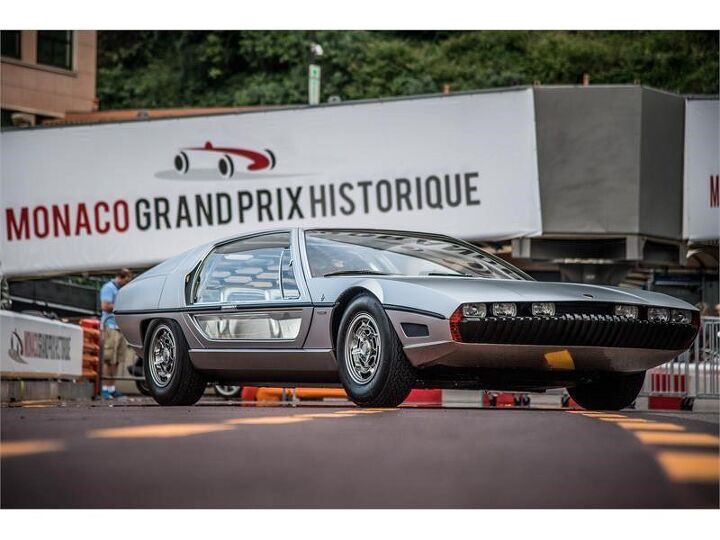
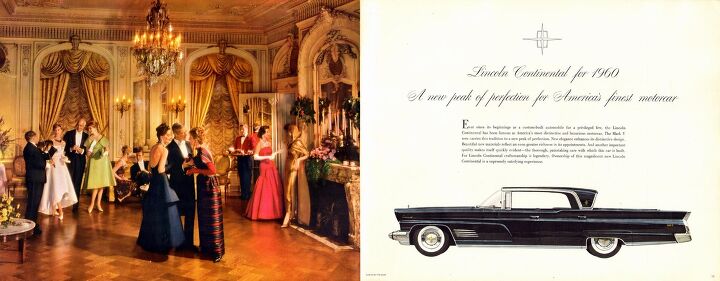
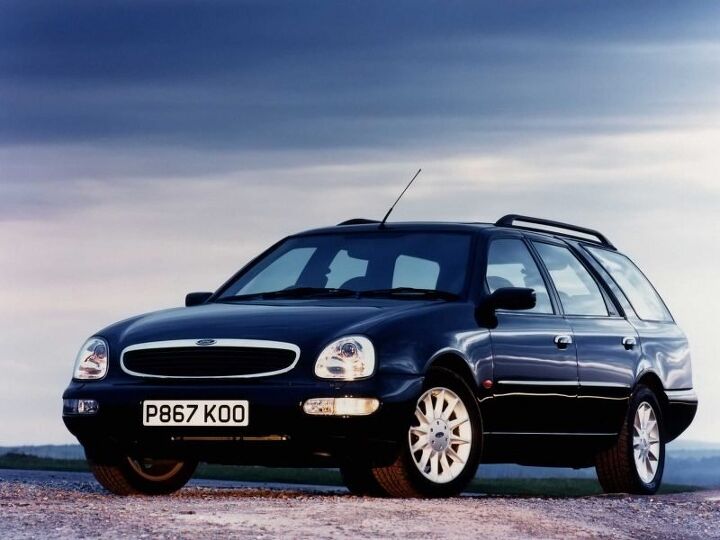

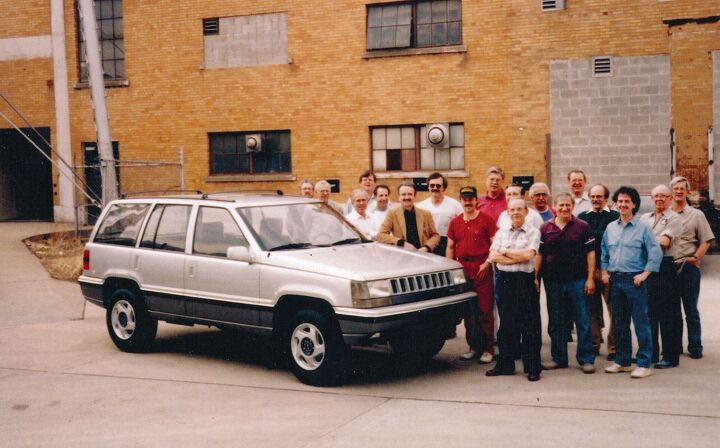
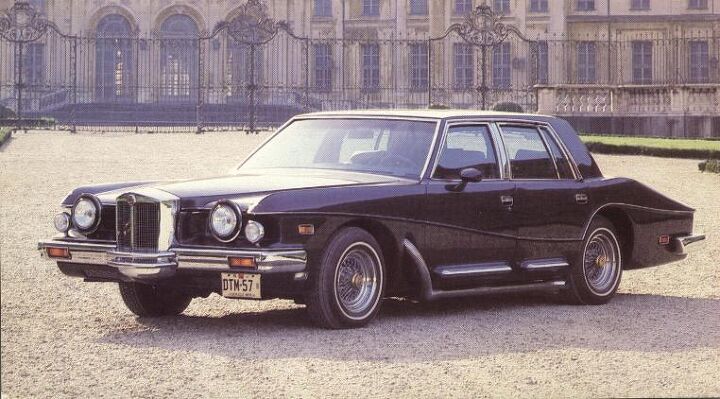
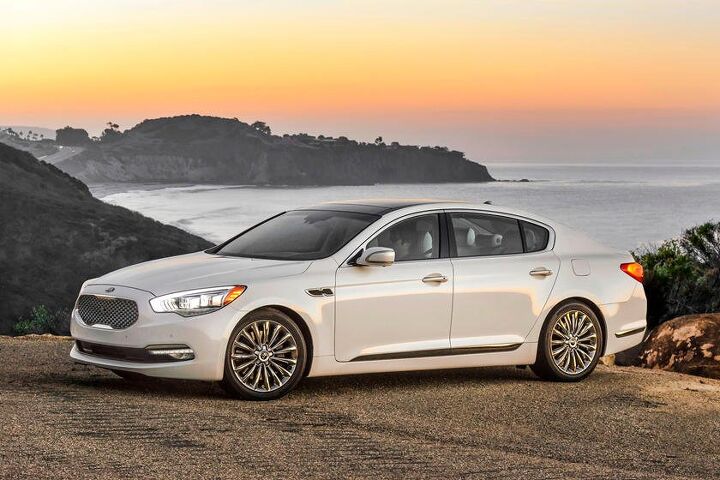
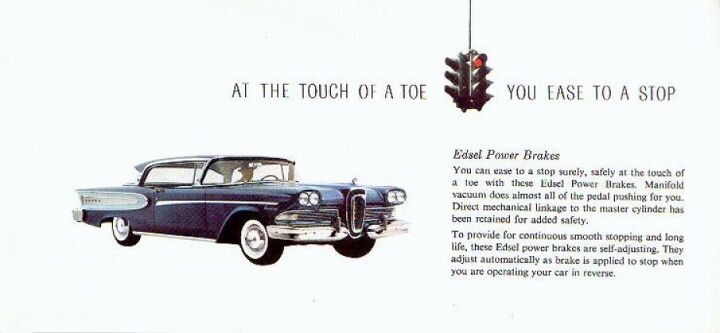
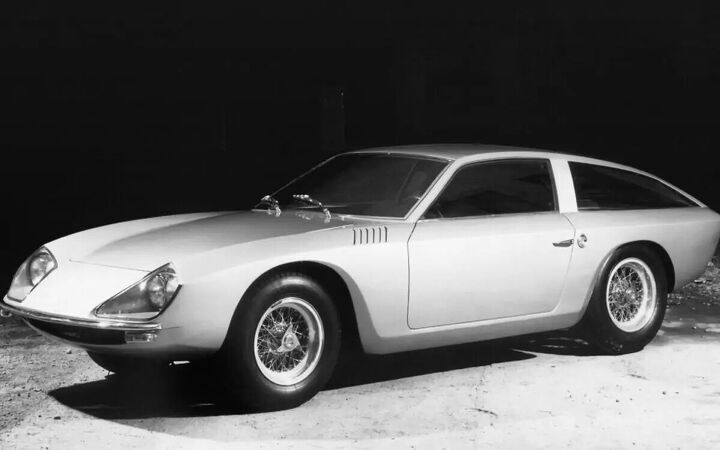
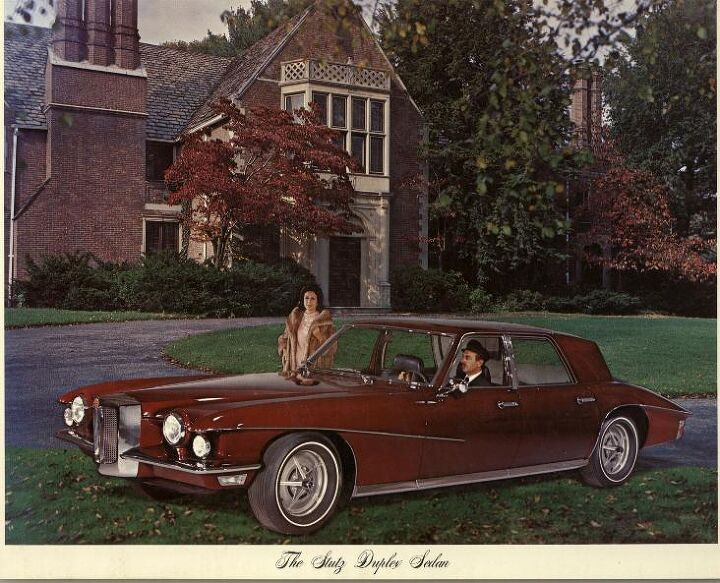

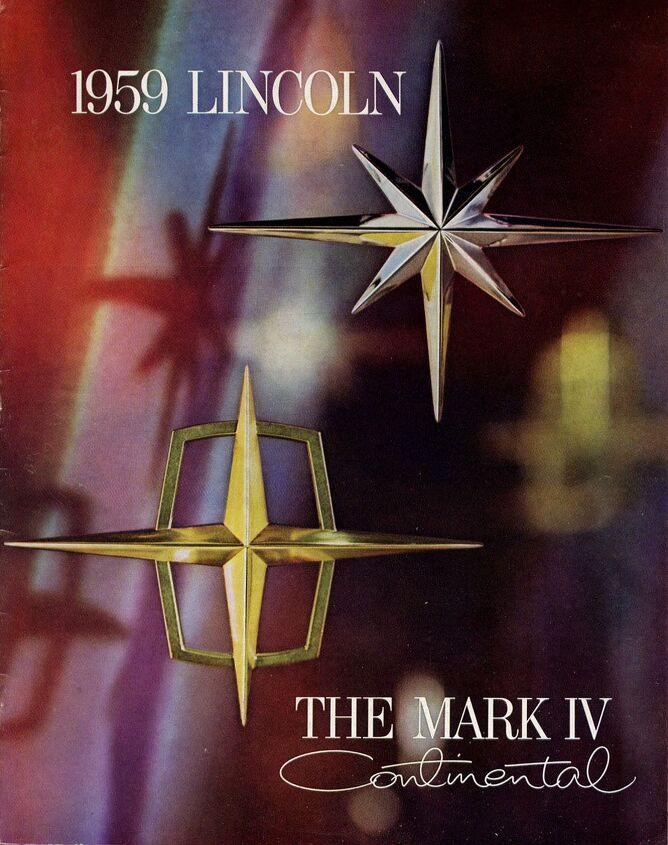
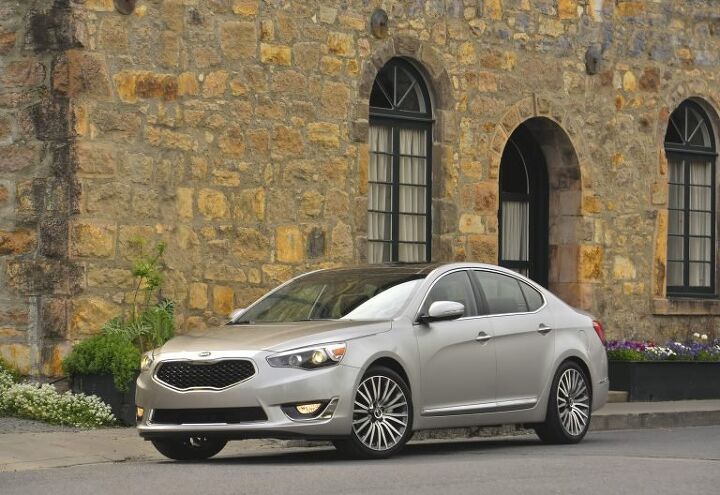

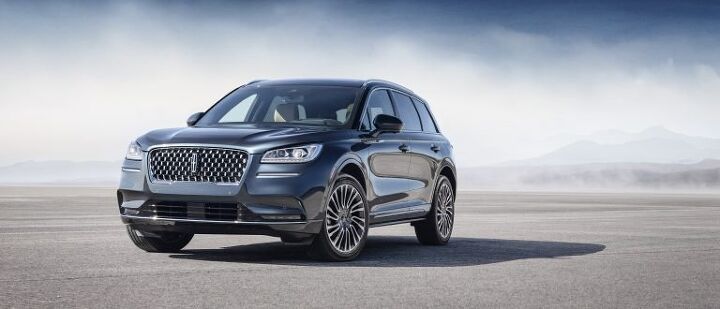
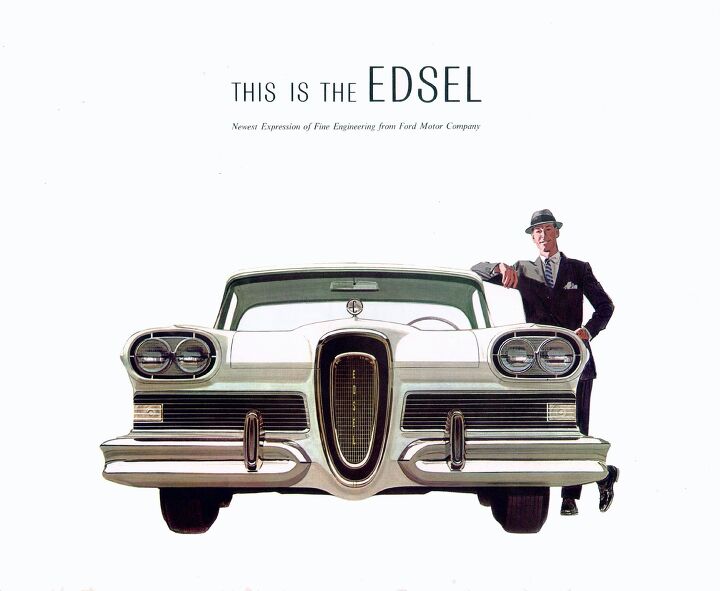
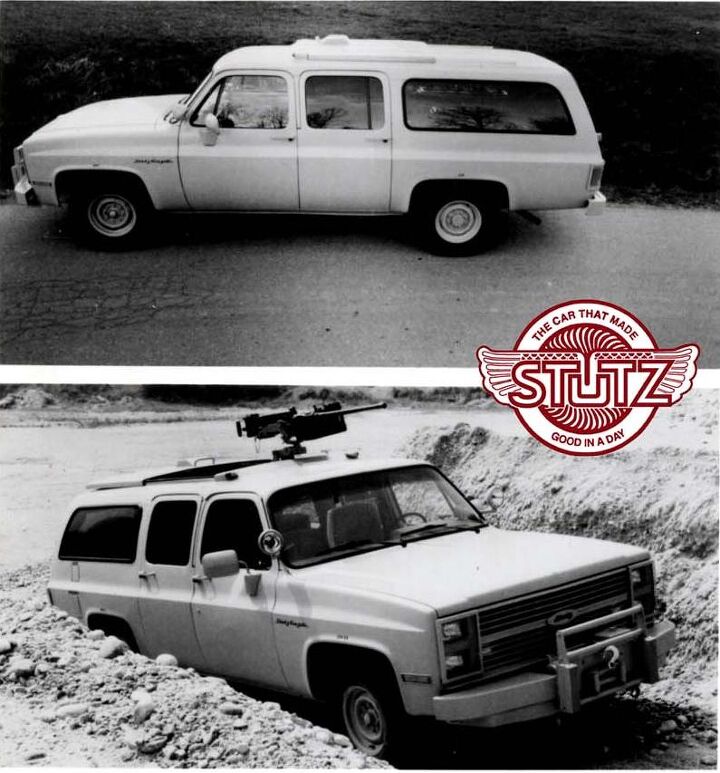












Recent Comments